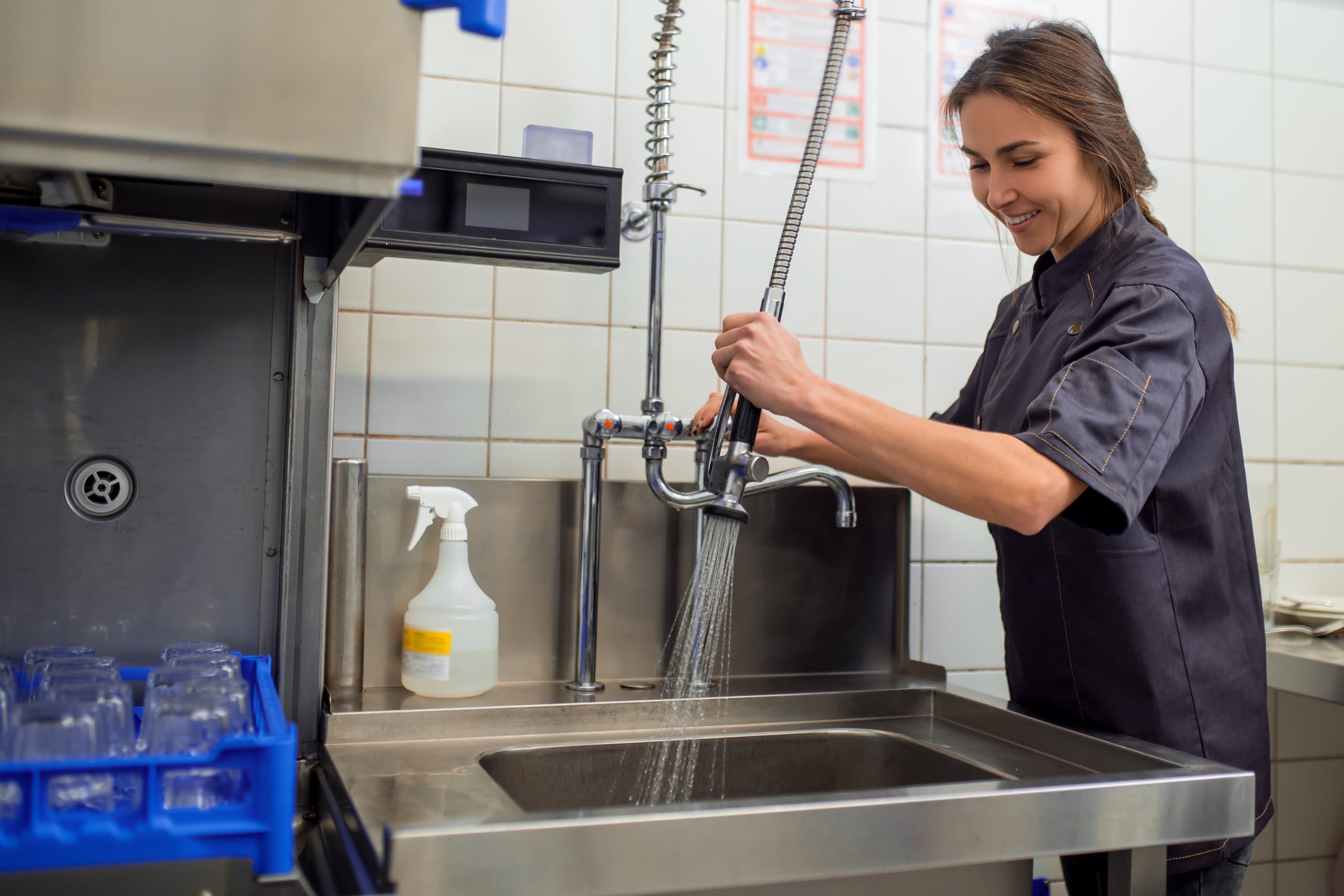The 4 biggest water waste culprits in commercial kitchens
Running a commercial kitchen is a notoriously challenging career, requiring a finely-honed ability to balance a wide variety of priorities on a daily basis. What’s more, the consequences of failing to deliver can often be quicker and harsher than plenty of other industries – the general public can be quite unforgiving if they feel hard done by when it comes to paying for dinner.
So if all that is already putting you and your team under daily pressure, then any additional distraction can be hugely unwelcome – especially if it’s costing you money. Here at The Business Water Shop, we have a great track record of helping countless businesses save money on their water bills, often by switching their business water supplier. With that in mind, if you suspect that you’re spending more on water than necessary in your commercial kitchen, our team have a couple of helpful suggestions on which areas to review first.

Hidden leaks in pipes and fixtures
Your staff will already be working hard to keep kitchens clean and safe, and this often involves identifying and reporting any leaks in pipes, taps, and equipment. Even a small drip can lead to considerable water loss over time, and leaks in supply lines or sinks can hide behind walls or under units, so it’s important to carry out regular checks and flag them before they intensify. And of course, whenever a problem is uncovered, it’s crucial to promptly take steps to report them to maintenance, preventing further water loss.
The main issue though is that hidden leaks can still develop in areas that staff often can’t easily see during their normal routines. Places behind fridges, dishwashers, or storage units can conceal drips for weeks, silently increasing consumption all the while. And since staff often focus on immediate tasks in these busy environments, identifying leaks in hard-to-reach places can take time. It’s a particular challenge when older plumbing or fittings wear out gradually, creating minor leaks that frequently stay unnoticed until they escalate. In some cases, these small leaks can saturate flooring or damage surrounding fixtures, which can make repairs more complicated and increase your operational downtime.
Inefficient dishwashing practices
Dishwashers and sinks are generally used constantly during service periods, ensuring that plates, utensils, and cookware meet hygiene standards. The priority is on keeping pace with demand, and avoiding shortages during peak periods. These high-traffic routines keep the kitchen flowing, but the flipside is that they can also open up opportunities for excess water use.
Dishwashing can consume more water than necessary when certain habits develop under pressure. For example, staff can run dishwashers that are only partially full to keep clean items available, which increases the number of cycles. They can also leave taps running at hand-washing or pot-washing stations when switching between tasks, as efficiency often takes priority over monitoring water flow. They’re small actions that don’t do a lot of individual harm, but when they’re frequently repeated across long shifts, they can cause water use to rise sharply. Over time, the additional energy used for extra wash cycles compounds the problem, which can result in higher utility costs and increasing strain on equipment that therefore needs to work harder for longer periods.
Excessive use of pre-rinse sprays
Pre-rinse sprays can make cleaning a lot quicker and easier by removing food residue before dishes go into the dishwasher, especially when tackling heavily soiled items. Understandably, they’re often go-to tools for staff, as they help to maintain high hygiene standards and prevent blockages in dishwashers.
Unfortunately, pre-rinse sprayers can become a source of significant water waste. They can be overused them by rinsing dishes for longer than necessary, or left running between items during busy periods. The habit of reaching for the sprayer frequently builds over time, especially in fast-paced kitchens where it’s essential to get through tasks quickly. In larger operations with multiple washing stations, the combined overuse across several sprayers can multiply overall consumption, which can end up creating a considerable (and often unnoticed) impact on your kitchen’s water use.
Poorly managed cooling systems
Cooling systems are another element that can still contribute to water waste when they aren’t working as intended. Older or poorly adjusted systems can discharge excess water, and these issues can often remain undetected without regular checks. Again, that’s largely because the focus often stays on immediate operational needs in high-demand kitchens, which means maintenance schedules can be extended. When this happens, water-intensive systems like ice makers or water-cooled condensers can use more water than necessary, raising overall consumption. In severe cases, faults in these systems can lead to continuous water flow or leaks which drive up usage, potentially damaging equipment and leading to unplanned downtime.
If you suspect you have a leak but you’re not able to tell for sure, you might want to check out our blog post on how to find out if you have a leak. It’s also a good idea to report it to your water supplier as soon as possible.
However, if for whatever reason you’re not impressed at the service that your water supplier provides, it may be worth considering a switch. If so, that’s exactly where we can help here at The Business Water Shop. Our network of trusted suppliers encompasses the whole of the UK, which makes us the perfect option to get you the most competitive water quotes for your business. We’ve even been able to save some customers up to 55% on their water bills, and you can count on us to use all our resources and industry expertise to get you the best deal.
It only takes a few minutes to get your online quote – so if you’re thinking about moving to switch business water suppliers, there’s never been a better time to do it!



 Excellent 5* Rating
Excellent 5* Rating



